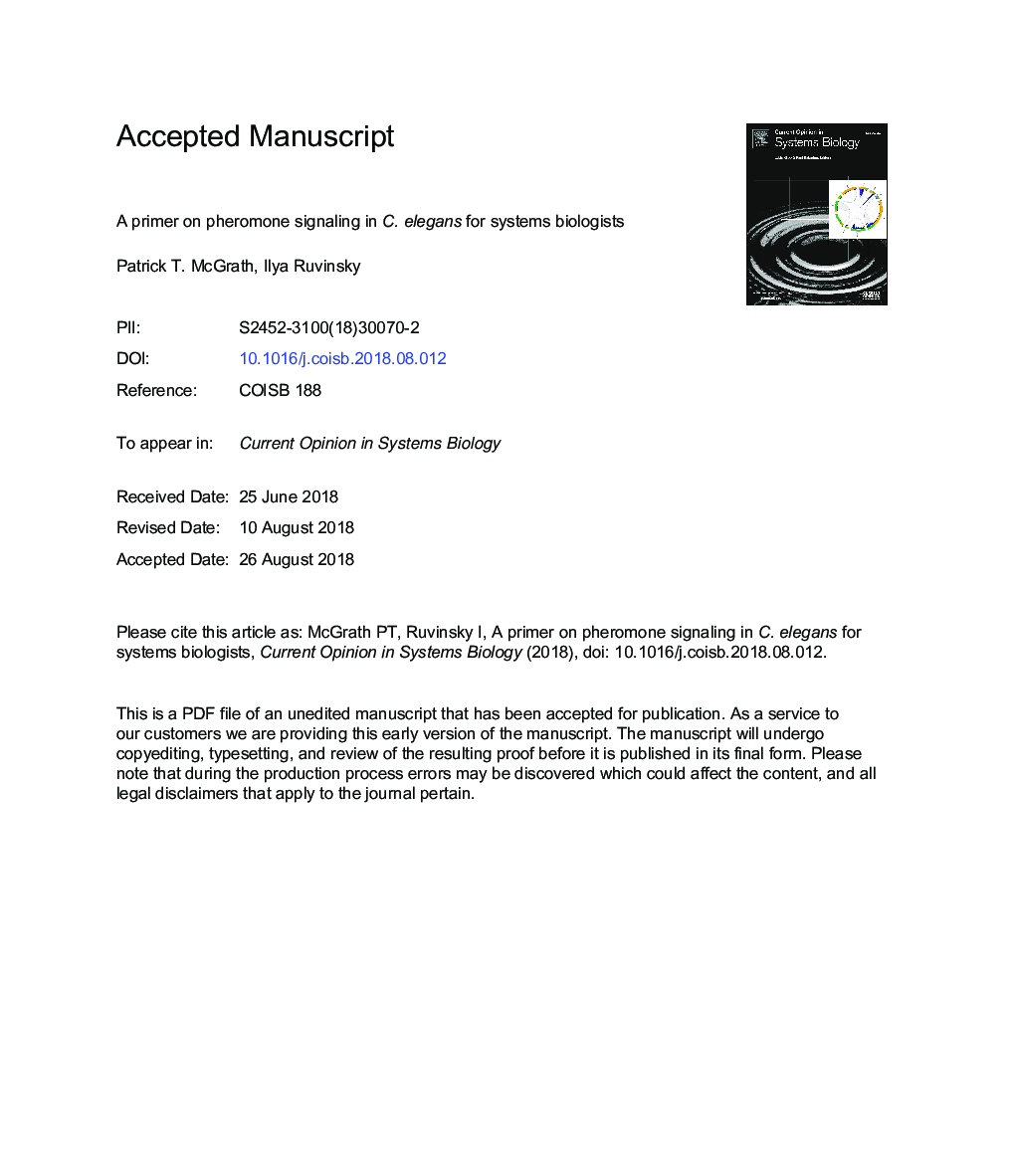| Article ID | Journal | Published Year | Pages | File Type |
|---|---|---|---|---|
| 10145033 | Current Opinion in Systems Biology | 2019 | 15 Pages |
Abstract
Individuals communicate information about their age, sex, social status, and recent life history with other members of their species through the release of pheromones, chemical signals that elicit behavioral or physiological changes in the recipients. Pheromones provide a fascinating example of information exchange: animals have evolved intraspecific languages in the presence of eavesdroppers and cheaters. In this review, we discuss the recent work using the nematode C. elegans to decipher its chemical language through the analysis of ascaroside pheromones. Genetic dissection has started to identify the enzymes that produce pheromones and the neural circuits that process these signals. Ecological experiments have characterized the biotic environment of C. elegans and its relatives, including ecological relationships with a variety of species that sense or release similar blends of ascarosides. Systems biology approaches should be fruitful in understanding the organization and function of communication systems in C. elegans.
Related Topics
Physical Sciences and Engineering
Computer Science
Computer Science (General)
Authors
Patrick T. McGrath, Ilya Ruvinsky,
